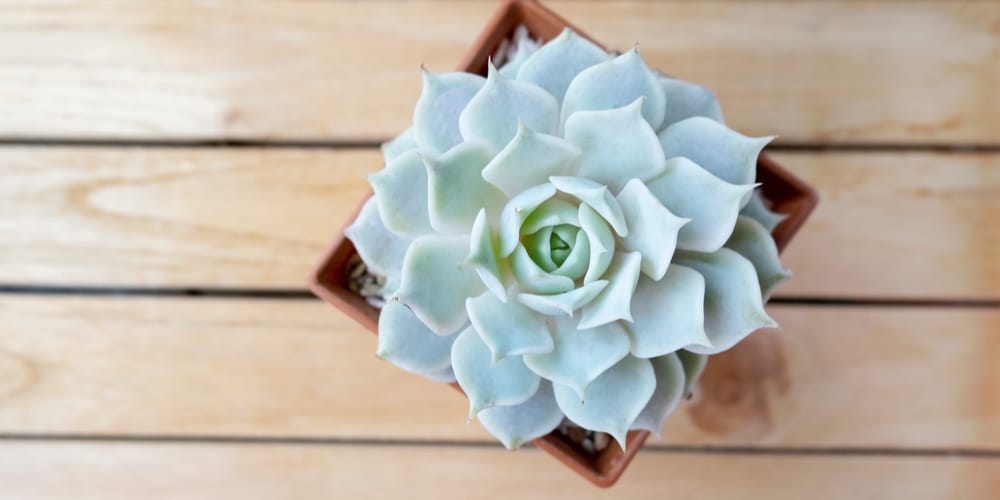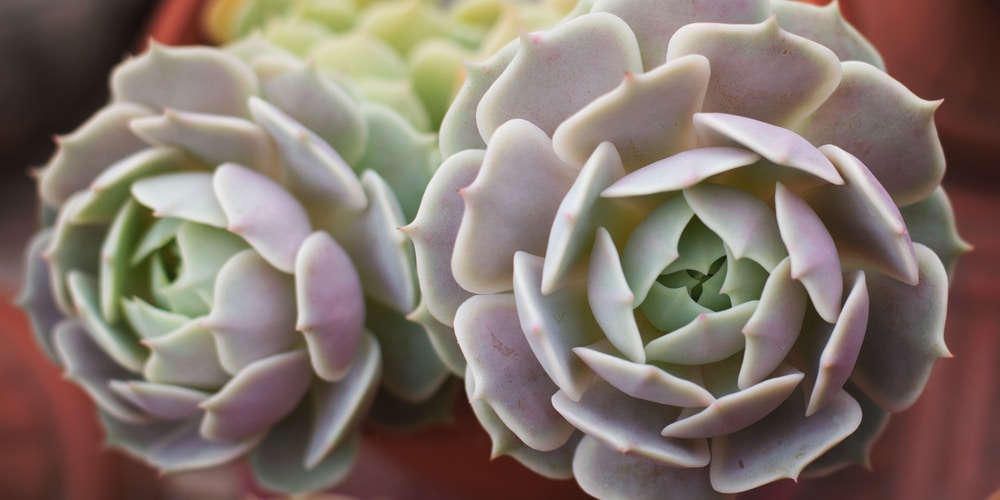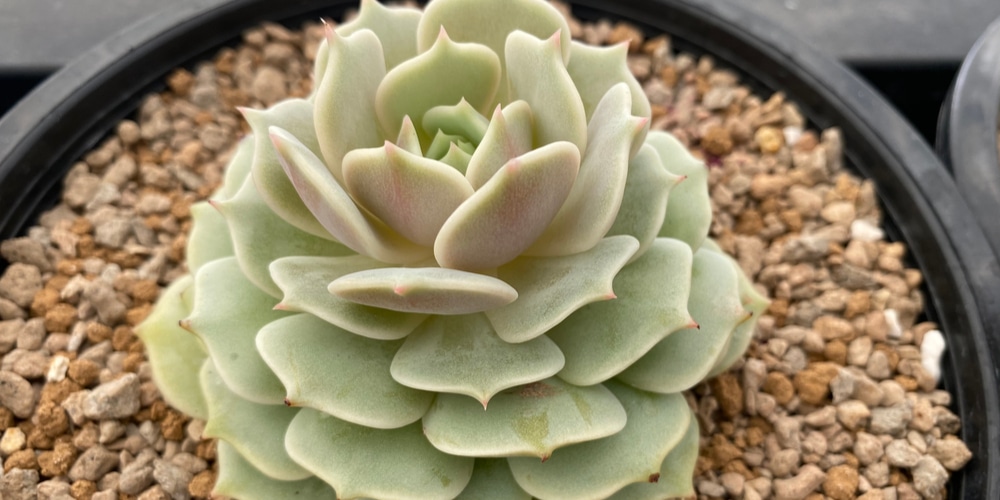Echeveria Lola is a unique definition of beauty. It takes the center point of all succulent showy plants that you can add to your array of beautiful flowers. It has blue-gray leaves with faint pink and blue hues, making it the center point of the beautiful description.
| Botanical Name | Echeveria ‘Lola’ |
| Common Name | Mexican chick, Mexican hen, Lola Succulent |
| Plant Type | Succulent perennial |
| Flower Color | Peach-colored flowers |
| Size When Mature | 3-5 inches tall and 6 inches wide |
| Bloom Time | Spring and Early Summer |
| Sun Requirements | Thrives in full sun and partial shade |
| USDA Hardiness Zones | 9-11 |
| Soil PH Range | 6.0 – 6.5 |
| Soil Type | Slightly acidic, well-drained succulent or cactus soil |
| Water Needs | Low water needs |
| Native Area | Mexico and Central America |
Amongst the many succulent plants to grow both outside and inside, echeveria Lola grows best. If you are planning to grow this little beauty, you need to have a few care tips at hand. This article will cover more about succulent Lola and how to care for it.
What to know about Echeveria Lola
The succulent Lola is a hardy plant that can grow healthy and strong in both containers and landscapes. It has farina on the beautiful leaves that provide a marbled texture adding a sense of interest to your garden.
To add to its alluring nature, echeveria Lola is also a tough and low-maintenance plant that can be easily managed in any garden.
Even though Lola is considered tough, it is highly vulnerable to frost. Generally, it is considered truly hardy for USDA planting zones 9 to 11. It is also fit for xeriscaping on these zones.
For the northern gardeners, echeveria Lola is a suitable houseplant. You can always have it planted in containers and move it indoors or outside the house, depending on the current weather.
The beautiful echeveria Lola produces peach-colored bell-shaped blooms during the warm spring and summer seasons. The flowers are usually at the top peak and attract pollinators like hummingbird butterflies and bees. Additionally, Lola grows lovely offsets referred to as pups which can be seen growing moderately in summer.
The plant has Mexican roots, making many gardeners call it Mexican chick or Mexican hens. However, it is commonly referred to as Echeveria Lola, its scientific name.
Care for echeveria Lola
Even though most succulent plants are hardy, they require certain conditions to grow well. Here is everything you need to know about growing and caring for a thriving echeveria Lola.
Light
For outdoor gardeners, Echeveria Lola can be planted in the full sun or partial shade. It can tolerate and thrive in a range of light conditions. If grown indoors, echeveria Lola does well with the bright afternoon sun bright light or glow lights. It can be placed near a window to receive as much light as possible for its succulent leaves to produce more food.
Temperature
The best temperatures for echeveria Lola should be moderately cool. The cool temperatures are suitable for enhancing leaf color. The plant can comfortably tolerate winter for gardeners in zone 9 and above, but the plant should be protected from frost in the lower zones. It can not withstand cold temperatures below 20°F.
Water
Most succulent plants like echeveria Lola are drought tolerant. Before watering, wait until the soil is dry. You can carry out a soil moisture text to confirm if the soil is dry- if yes, you should water deeply.
While watering, do not splash water on the overhead but at the ground level. Also, remember that overwatering can cause issues like root rot.
Soil
High-quality soil with good drainage characteristics is highly recommended for echeveria Lola. You can use either cacti or succulent soil if you are using pots. Also, put drainage holes in the pots to ensure the soil does not get waterlogged after watering.
Report once every year during the springtime to give the plant fresh soil and new nutrients. For outdoor gardening, amend the soil with gravel, coarse sand, and organic material to help in improving drainage and enhancing sustenance.
Fertilizer
Surprisingly, echeveria Lola does not require fertilizer while growing. However, it will at some point hit the growth plateau. At this point, you can supply it with a half-strength liquid fertilizer with low nitrogen composition.
Common diseases
The most common disease that threatens echeveria Lola’s life is root rot, and its leading cause is simply overwatering. It may take some time for the diseases to be identified, but the effects are fatal.
When you overwater the plants, the roots get wet constantly and will begin to decay. The first part to be affected is the roots, then the stem and leaves too will get affected.
You cannot reverse root rot disease; all you need is to be cautious with the amount of water you supply to your plants. If you notice a few affected areas, prune them back and minimize watering.
Plant propagation
Propagation of echeveria Lola can be easily done using leaf cuttings. Like most succulents, echeveria Lola produces offsets that can be separated from the main plant. Once you separate them, put each offset in a pot and handle it as a mature plant.
Related Article: Fuzzy Succulents


